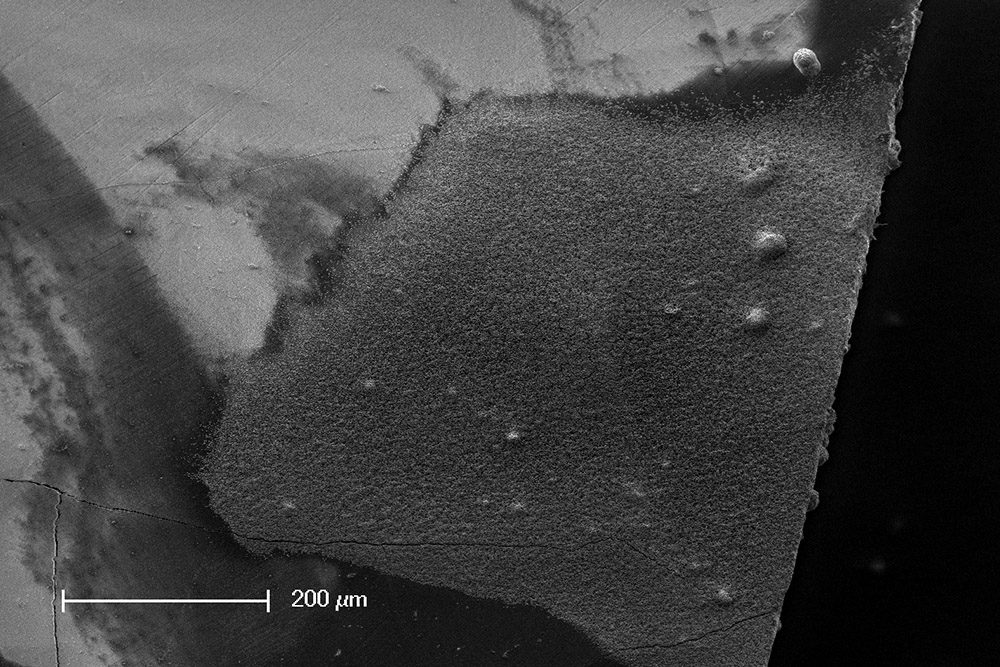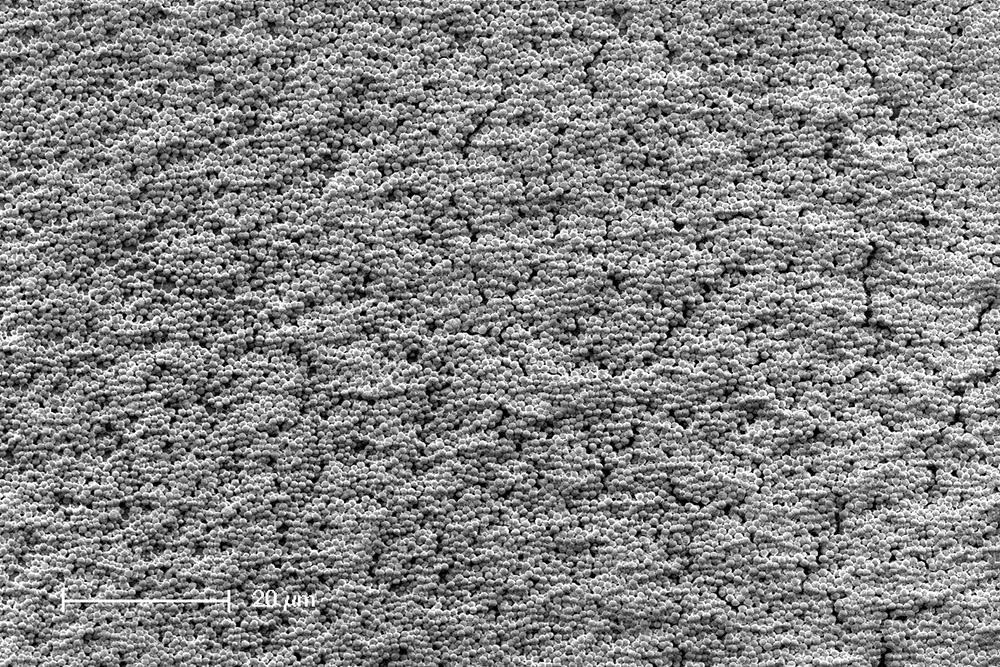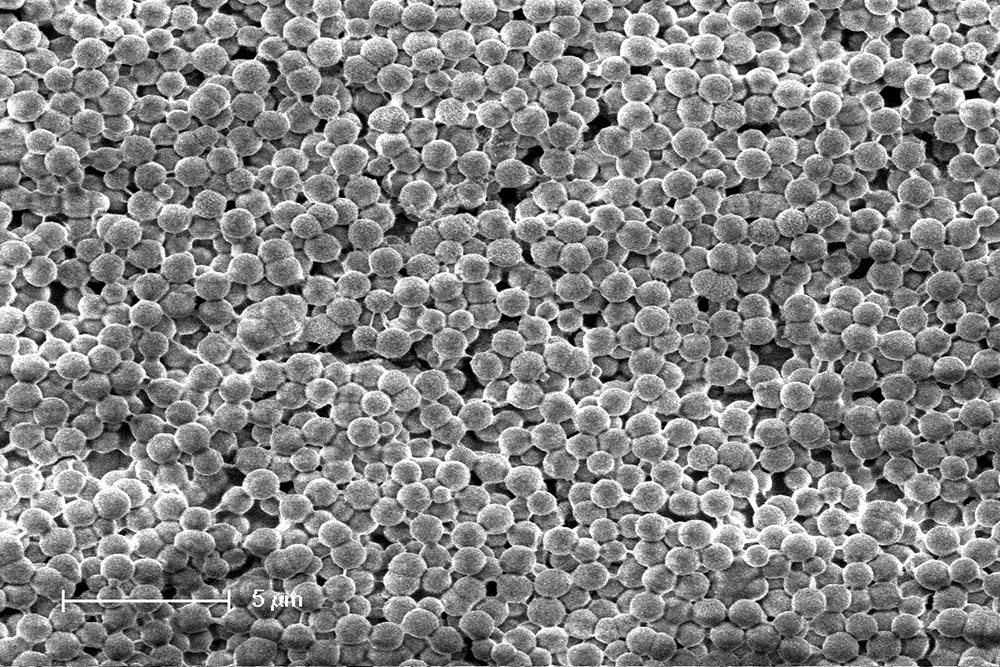Hydroxyapatite (HAp) offers advantages in dental medicine. Approximately 95 percent of it occurs naturally in tooth enamel and impresses with its hardness and resistance to acids, bases, compression or abrasion. Researchers of the IKTS group "Biologized Materials and Structures" use these material advantages for a special type of biomineralization. This kind of mineralization allows the production of a biomimetic tooth enamel (hydroxyapatite), which should enable enamel regeneration and restoration. For this purpose, the principle that leads to the formation of natural tooth enamel is artificially imitated: The three-dimensionally organized, enamel-analogous HAp crystallites, which are interconnected via an organic "putty substance" corresponding to the enamel matrix, are synthesized and made available for the treatment of enamel defects. So far, no such artificial biomimetic repair approaches exist in dentistry. With the "ArtEnamel" project, the IKTS group will attempt to close this gap.
The latest findings on tooth enamel formation now make it possible to adapt the mineralization process, to synthesize more material and thus to carry out both a three-dimensional coating of implant materials, crowns and superstructures and to perform downstream structuring processes. Beyond this project, those involved also want to transfer the principle of the mineralization/consolidation approach to other (technically relevant) tribological material systems.


